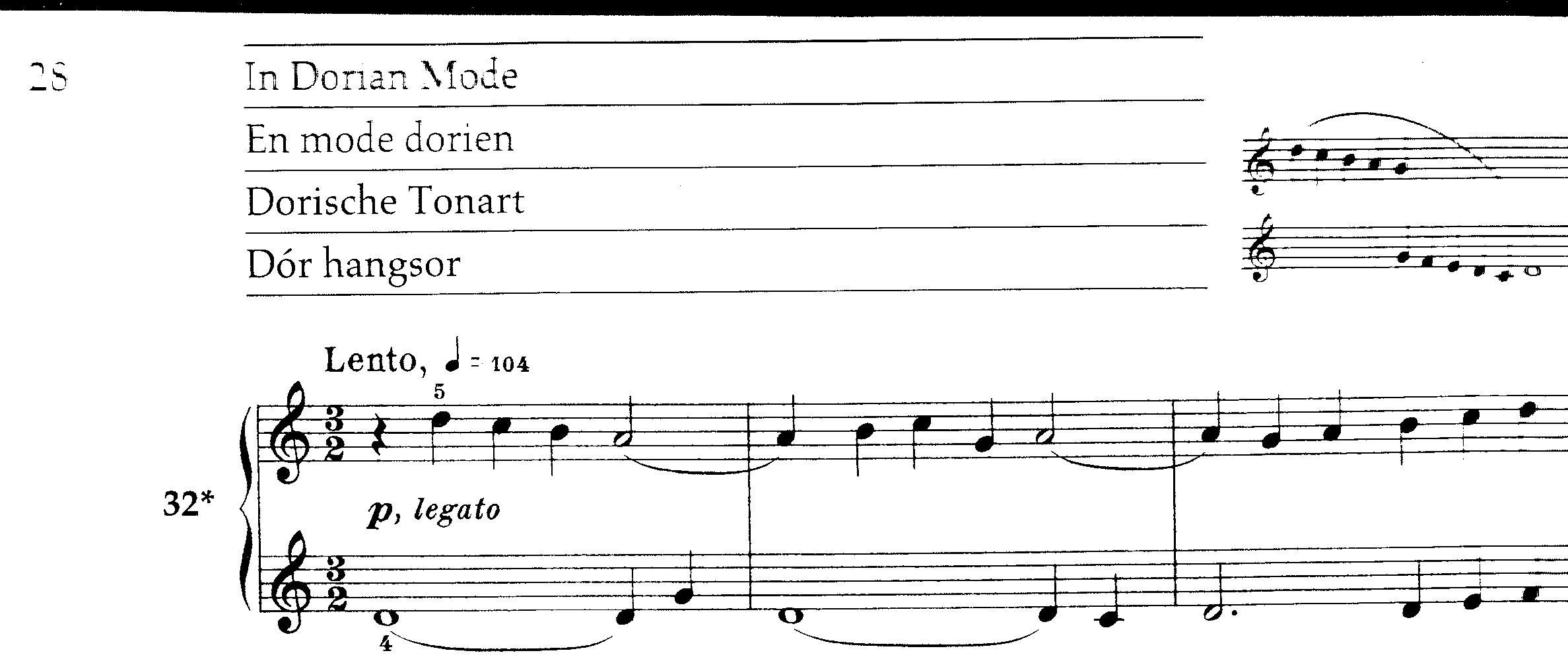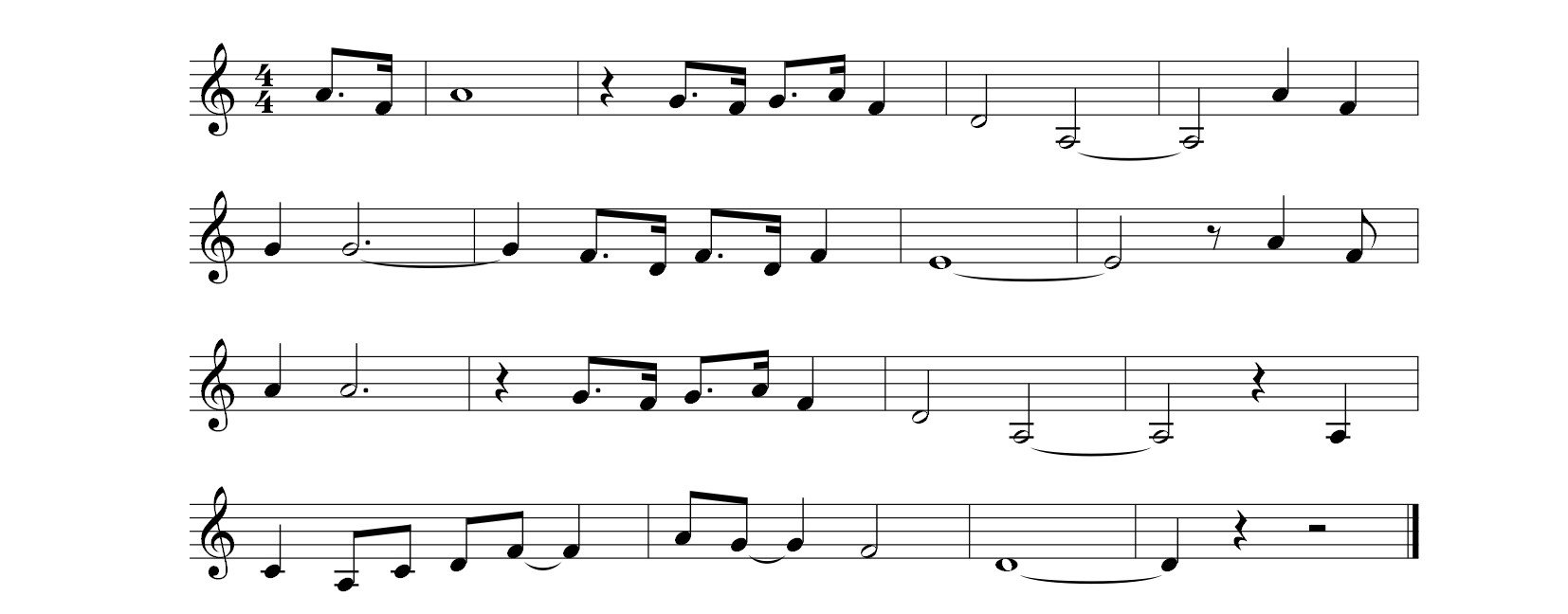The Maestro Online
The Dorian Mode
What is the Dorian Mode or Dorian Scale?
Modes pre-date our major-minor scale system and are often referred to as the “church modes” because medieval church music, your typical monk chanting, used modes.
The simplest way to think of the Dorian Mode is using all white notes on the piano starting and ending on D. Slightly confusingly, over the years the Dorian Mode changed slightly as singers began to alter notes. Therefore, the Dorian Mode might contain a Bb. This changing of notes is known as “musica ficta”.
What are the characteristics of the Dorian Mode that you can hear?
What makes the Dorian mode distinctive is its minor third (D-F) and, more significantly, the combination of this with the minor 7th (D-C). Normally you have only one semitone step between the 7th note of a scale and the 8th (octave). However, certain modes have a tone and the Dorian mode is one such example. This 7th is a semitone lower than we expect in modern scales and so might be known as the “flattened leading note”.
The Dorian Mode Sound in Rock Pop Music
Let’s tackle the Dorian mode in the modern era, with rock-pop tunes!
Scarborough Fair (Simon and Garfunkel)
(1) Simplest example: Scarborough Fair – a traditional English song covered by Simon and Garfunkel. Chords between C Major and D minor use the “flattened leading note”. They make it sound very Dorian.
Thriller (Michael Jackson)
(2) Thriller by Michael Jackson. This is not only in the Dorian mode in the melodic pitches used, but also the harmony. Essentially, it has a decorated “pedal note”. If one pitch is constantly asserted in the bass it is usually known as a “drone” or “pedal note”. This enhances the modal feel.
I Wish (Stevie Wonder)
(3) I Wish by Stevie Wonder. The alternation between two chords Ab7 and Ebm7 creates almost harmonic stasis in this song.
Doo Wop That Thing (Lauryn Hill)
(4) Doo Wop That Thing by Lauryn Hill. This is a superb example! The parallel moving Bb Am Gm chords really enhance the Dorian mode feel.
Are there modern Classical Composers that use the Dorian Mode?
Absolutely loads of composers use the Dorian Mode from Messaien to Naji Hakim. Perhaps one of the most renown twentieth century composers to use the Dorian Mode is Bela Bartok. Here’s an extract from his piano tutorial written for his son, Mikrokosmos, which clearly cites the Dorian Mode as its source. If you’re a pianist, do purchase Mikrokosmos, it’s well worth it!
What about the Dorian Mode in Jazz Music?
One of my favourite jazz pieces to improvise on is Summertime. Officially, this is in D minor (the melody looks like Dorian Mode, but an A Major chord features in the harmony, using a C#). Try some Dorian Mode improvisation over it – it works beautifully!
Can I Learn Pieces in the Dorian Mode and can I improvise using the Dorian Scale?
The Maestro Online has collaborated with the awesome Mick Donnelly, saxophonist to the stars, to create a piano modal course par excellence! Mick has performed with the likes of Shirly Bassey, Robbie Williams, Whitney Houston and endless more. His improvisations are exceptional. The point of the library digital course with Mick, is for a pianist to learn melodic improvisation from a melodic instrument. Here’s a teaser:
Celebrity Masterclasses and Music Courses Library
Want to explore the Dorian Mode Course and other exquisite celebrity masterclasses that enhance your improvisation, affordably? Legendary names and fantastic resources!
Piano Practice Toolkit: Grade 2
These practice toolkits support The Maestro Online Popular Piano Exams (also supporting other exam boards too), or simply a keen amateur at home who wants to just sit and improvise. These are the piano toolkits that will maximise your piano fun, develop core skills and help you connect theory with sound!
The Maestro Online Grade 2 Piano Practice Toolkits
Rhythm backing tracks to help support your fluency, improvise in time.
Interactive step-by-step scale/key tracks for the relevant keys for each grade, helping you start with just one note per key, then 2 notes, “add it and nail it” without feeling overwhelmed.
Multi-style scale/key backing tracks in Pop, Soft Rock, Reggae and Funk to support your concept of key and improvisation.
Song style backing tracks in the style of a selection of songs on each grade syllabus to help develop your improvisation.
EXCLUSIVE Celebrity Improvisation lessons, tips, tracks, teaching techniques from World-Class Masterclass Tutors, including pianists who played on some of the original pop songs, interesting anecdotes, professional piano player insights, and session musician perspectives.
Rhythm Backing Tracks
Support your fluency, improvise in time in 3/4 and 4/4 with tracks created by our Masterclass Tutors Marcus Brown (Madonna and more) and Nicky Brown (legendary producer & BBC).
Tracks:
- 4/4 Rock
- 3/4 Time
- New York Loop
- Slow Funky Loop
- Slow Drive Loop
- Pop Loop
- Detroit Loop
- Ballad Loop
Bonus: Establishing 4 beats per bar Masterclass Lesson by Nicky Brown.
Scale & Key Fun
Scales are not a requirement in the exam, but they are great for understanding keys and improvisation. We do them in a really fun way!
At Debut level C, F and G Majors were your priority.
At Grade 1 level, D and Bb Majors are also a key focus.
At Grade 2 level, A and Eb Majors Majors are added.
These tracks have been created exclusively by Andrew Sparham, our Guitar Tutor.
The Maestro Online “We Will Rock You” scale method.
Interactive step-by-step tracks in C, F, and G Majors helping you start with just one note per key, then 2 notes, “add it and nail it” without feeling overwhelmed.
Bonus Masterclass – Add it and Nail It method by Mick Donnelly (Michael Jackson, Whitney Houston, Robbie Williams & more)
Multi-style backing tracks in C, F, and G Majors (plus Mixolydian) in different styles to support your concept of key and improvisation. There are also tracks with the bass removed so that you can develop your LH and RH separately:
- Pop (Pentatonic/Major)
- Soft Rock (Mixolydian)
- Pentatonic and Major are very common in pop songs.
- Mixolydian is really common in rock guitar solos.
Song Style Backing Tracks
These are inspired by songs from the Grade 2 syllabus to help develop your improvisation.
- You Really Got Me
- We Didn’t Start the Fire
- Smoke On the Water
- Shake it Off
- Moves Like Jagger
Exclusive Pro Tips
EXCLUSIVE Improvisation lessons, tips, tracks, teaching techniques from World-Class Masterclass Tutors, including pianists who played on some of the original pop songs, interesting anecdotes, professional piano player insights, and session musician perspectives. For Debut Level, tracks by international level pianists include:
- Move to the Groove
- 1 Note Improv
- 1 Chord Improv
- Establishing 4/4 time
- Beats 1 & 3
- The 3 Note Groove
- Same Progression, Different Grooves
- Pentatonic Scale inspired by “You Really Got Me”
£29.99 one off payment
Click to Buy £29.99 One-Off Payment
£29.99 per month including over £2000 of courses and masterclasses
Click to Subscribe to All Toolkits, Courses & Masterclasses
(over £2000 of content included)








